953
Disgusting delicacies (30 photos)
If you have recently had lunch, it is better you do not read this post
One of the most interesting features of any national culture is food and taste preferences. Cases when the gastronomic delights of one people can cause nausea in others. So, around the world people consume all sorts of living creatures stirring, whether spiders and worms, some animals, such as sheep's head or duck embryos, and still many diverse nicest creations of nature.
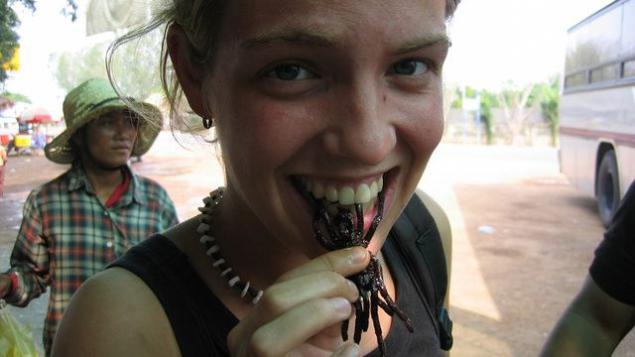
Balut - is ripe duck embryo doomed to be boiled alive and eaten in its own shell. Very common delicacy in the South-East Asian regions, preferably applied to beer
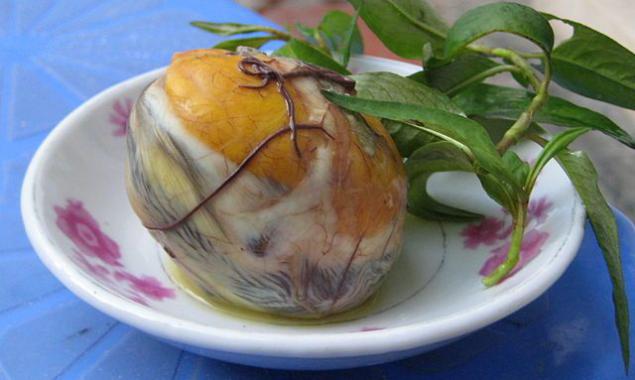
According to the Filipinos, the most delicious Balut is obtained from 17-day duck eggs, while the Vietnamese prefer more mature - 19-21 days after birth.
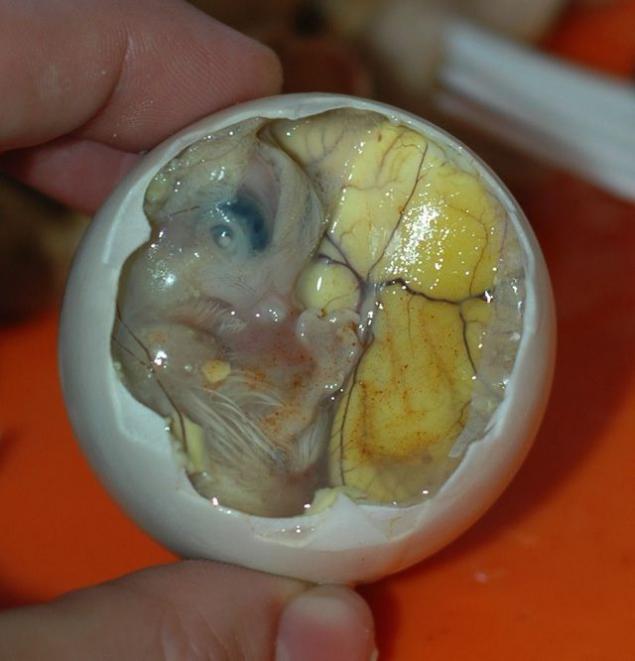
Kazu Marzio (Sardinian. "Rotten cheese") is a traditional Sardinian sheep's milk cheese produced in Italy. The creators of this product, create first a normal pecorino cheese, which left "income" in the open air, allowing flies to postpone the special cheese in it the larva. Hatched maggots digested fats, cheese and fermented them
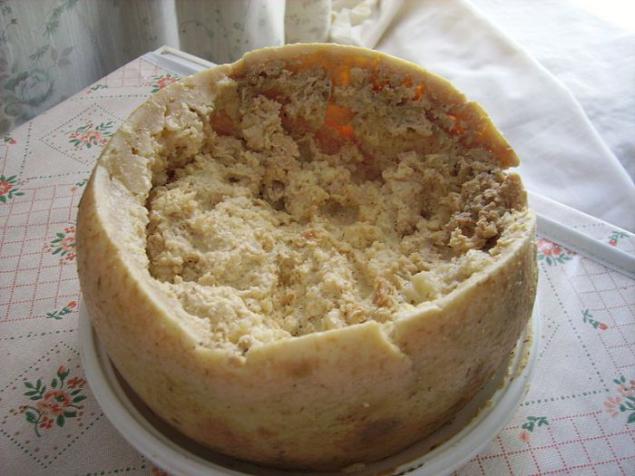
Usually after such a procedure, "enrichment" cheese product no one takes from the resulting curd thousands of these white worms, though some still try. Kazu Marzio years was banned for manufacture, storage and use, and was available only illegal, but for several years as it proclaimed Sardinian product, so now we can again enjoy this wonderful cheese, unless you are sure that your stomach can easily digest colony of maggots.
Mongolian budog - is roasted in their own skin the carcass of a goat or marmot prepared using embedded in her stomach incandescent stones
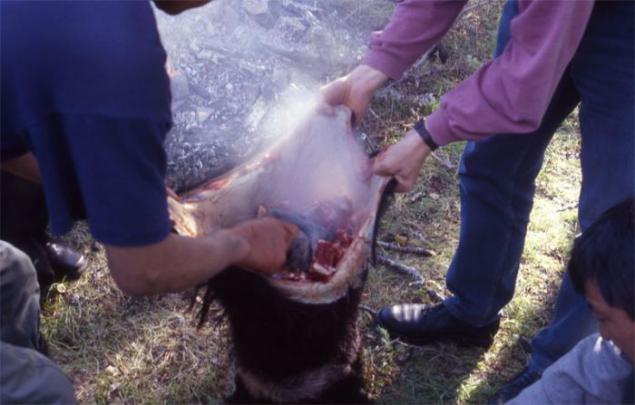
Kiviak - Eskimo delicacy delicacy originally from Greenland
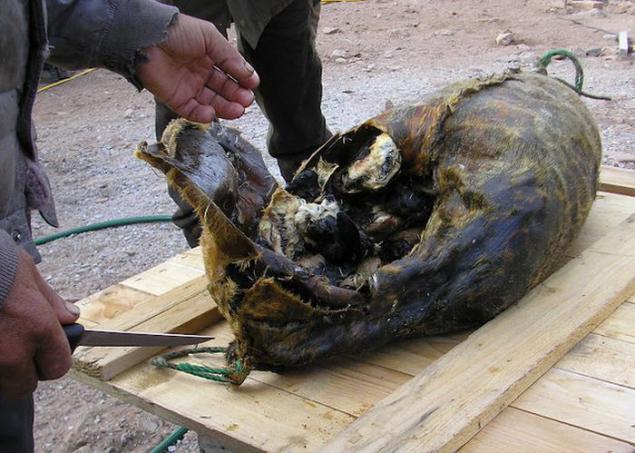
The recipe is very simple and requires, in addition to the main ingredients of remarkable patience. We need to find and procure five hundred small birds, guillemots, killing seals, cut off his head and into the hole, without taking rest, shove the birds as much as possible. Also, it is desirable to pre-etch of the carcass as much air, covering all kinds of seal cavity carcass fat and buried under a pile of dainty future stones. Only half a year of waiting and you can extract the finished dish out of the ground, getting pleasure from his inexpressible fragrance and simply relish raw rotting remains of birds.
"Millennial egg" - a national Chinese appetizer created by prolonged storage of conventional bird eggs in a mixture of ash, salt, calcium oxide, rice husks and glue. Depending on the preferences, the product being prepared from a few weeks to a couple of months
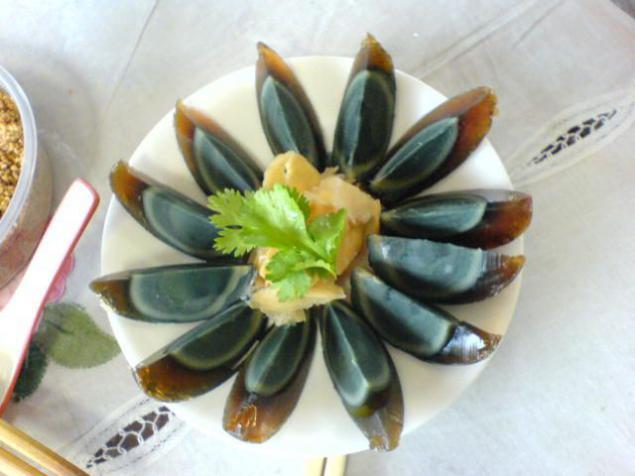
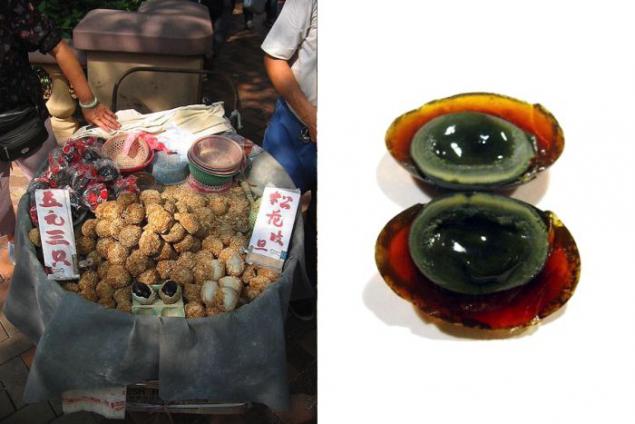
A delicacy in Cambodia - fried tarantula the size of the palm of an adult as "a-ping"
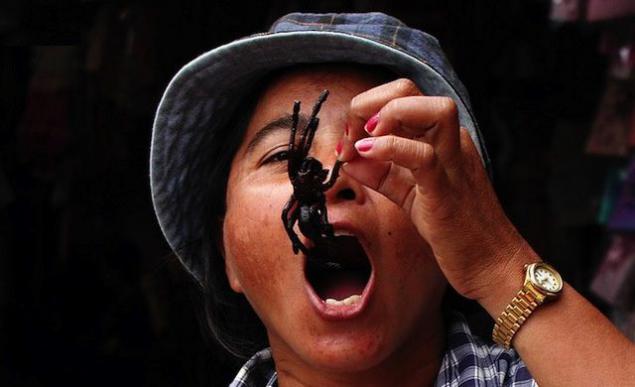
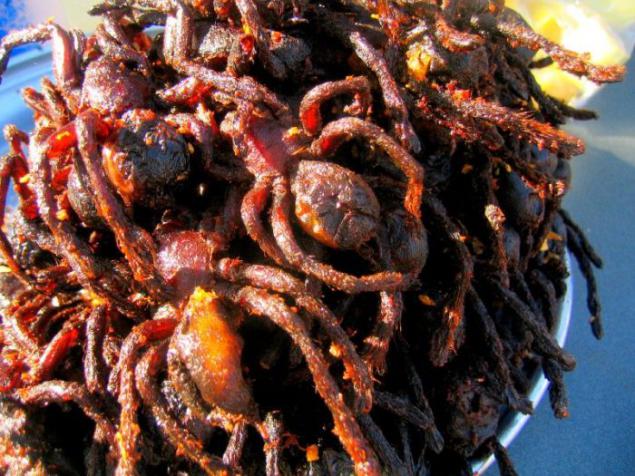
Smalahove - National smoked or cured Norwegian dishes, the main ingredient of which is the sheep's head. Typically, the food is cooked poor
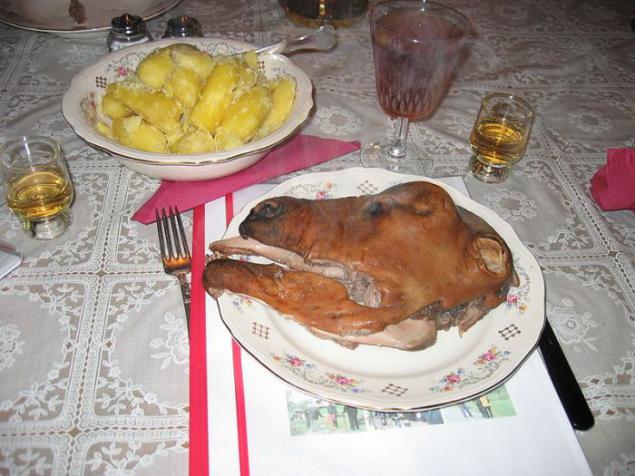
Eskamoles - Mexican dish of ant eggs collected from the roots of agave
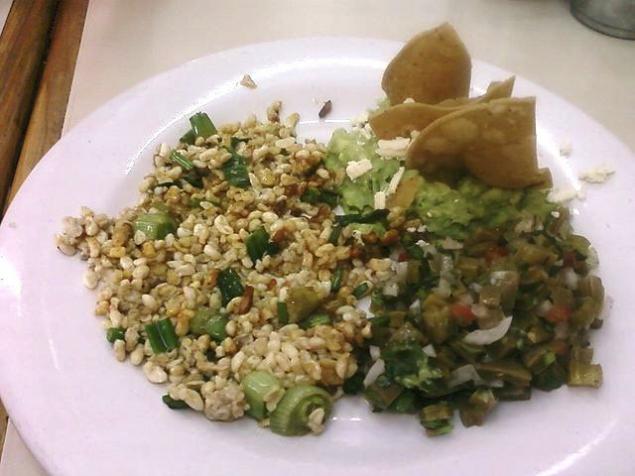
Pork blood with bread for breakfast
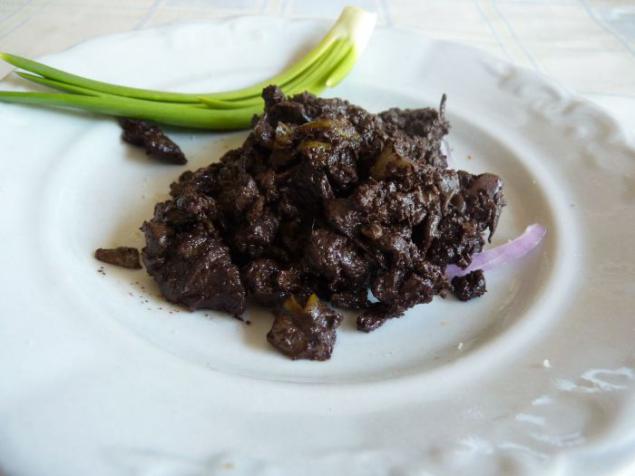
If the Hungarian pig slaughtered early in the morning at dawn, its fresh blood, fried with onions, turns into a decent meal for breakfast.
Sannakji - raw Korean dish consisting of a live octopus, sprinkled with sesame seeds and flavored with sesame oil. In general, it looks pretty innocuous, but frantically contracting slimy octopus tentacles and "revenge" gourmet, blocking access of air through the windpipe
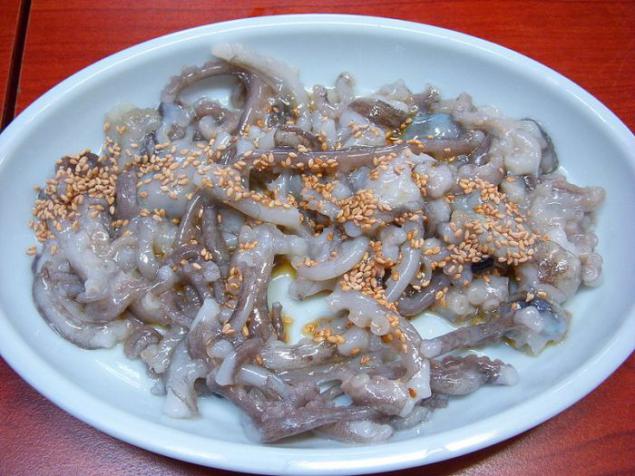
Eye tuna from Japan
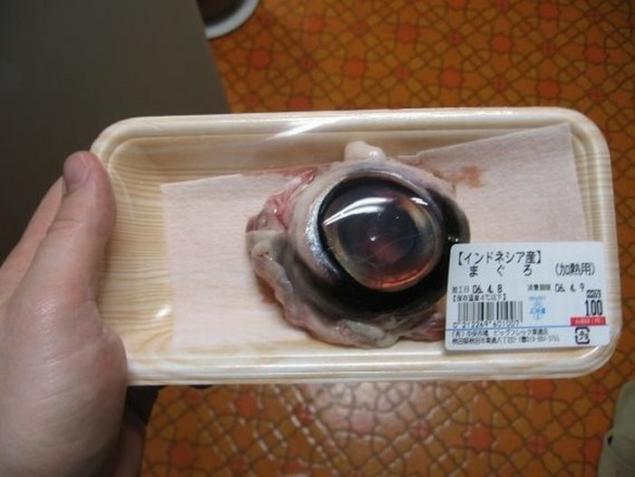
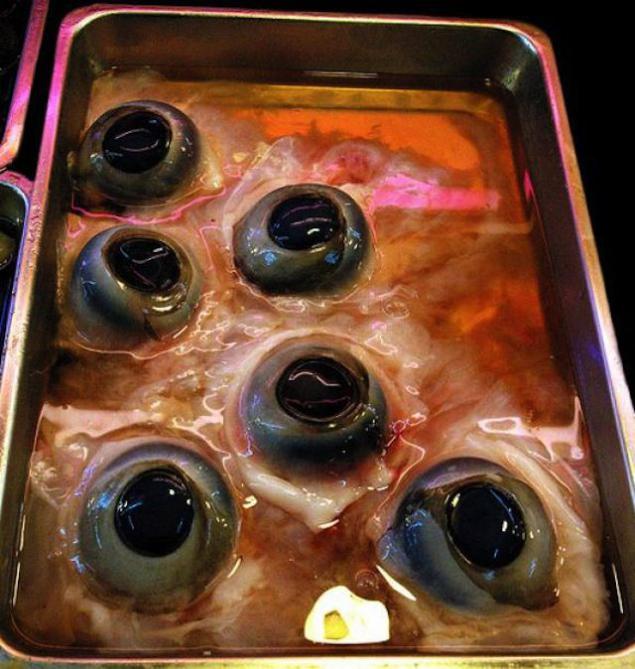
Hush - a traditional dish originally from the Caucasus, were prepared from beef feet, heads and stomachs
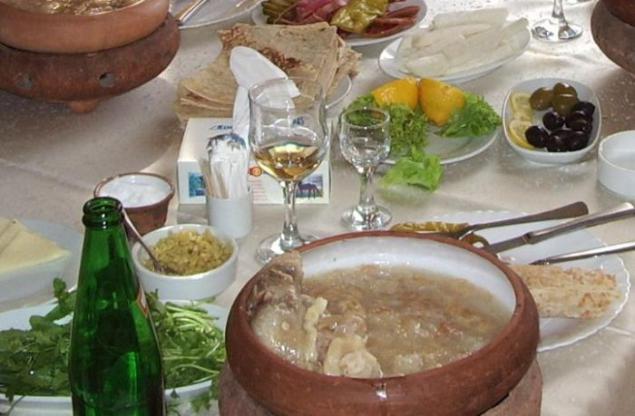
Durian - the "king of fruit" - is edible, but terribly smelly fruit fruit. Its smell is so volatile that in south-east Asia it is forbidden to eat in some areas, such as hotels or public transport
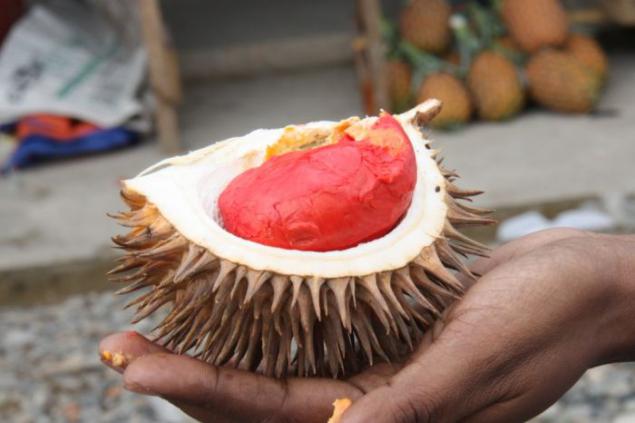
Ikizukuri is sliced thin pieces of fish, shrimp or octopus, but most often it is the fish
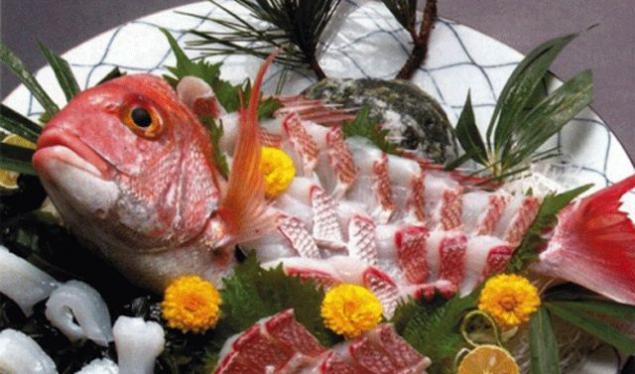
Chef cuts the fish so that by the time serving her heart still flutters, while fillet is completely sliced. Understandably, such a shaped mockery of living beings is forbidden in some countries, such as Germany and Australia.
Blood pancakes - Finnish-Swedish national dish, which include pork blood, milk, rye flour, dark molasses, onion and butter

Rooster combs
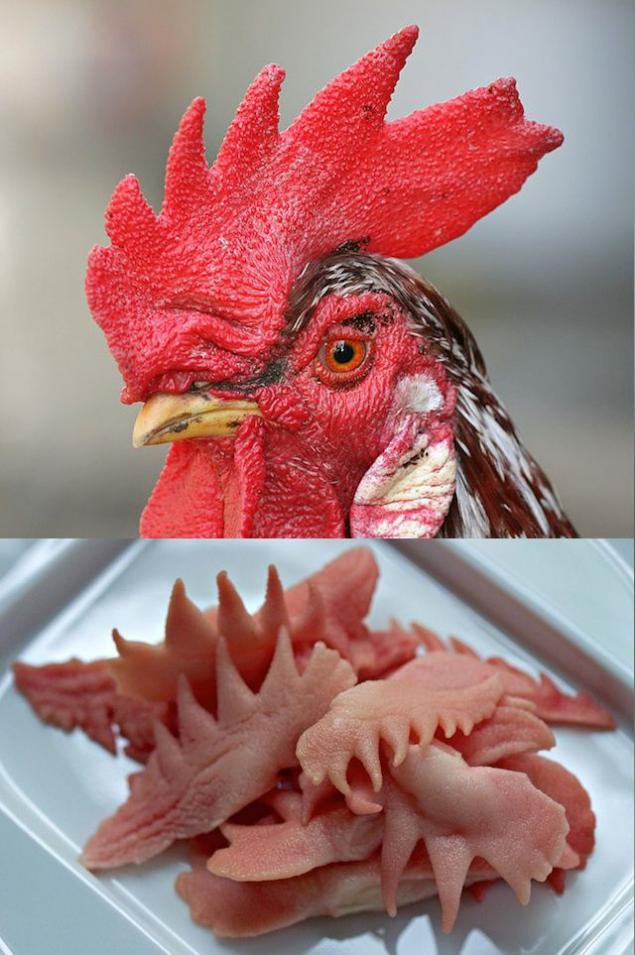
Fruit soup bat - common culinary delights on the island of Palau in Micronesia
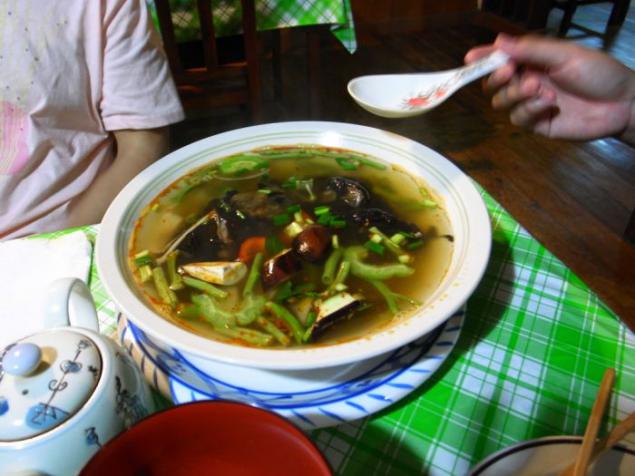
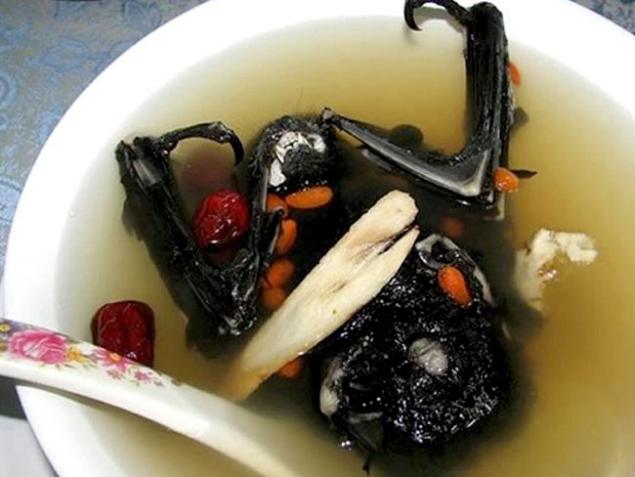
Hakarl - poluprotuhshee, jerky grenladskoy polar shark on the preparation of which takes more than six months.
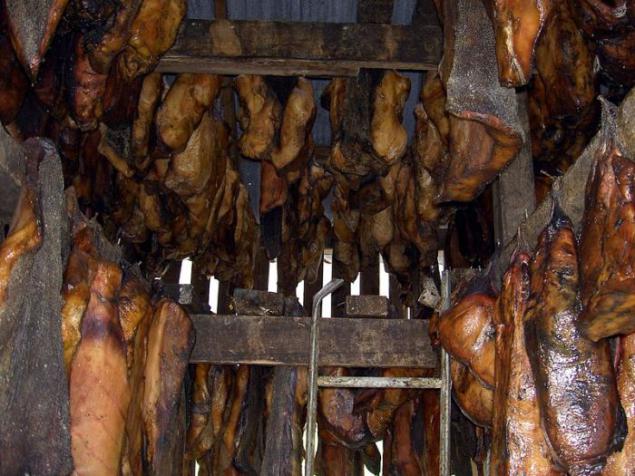
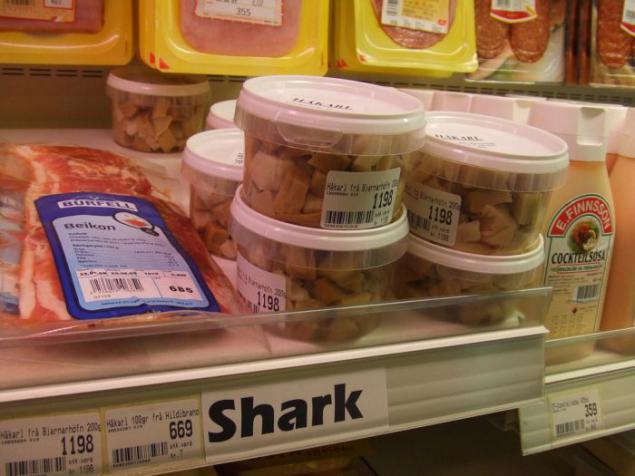
Bovine genital organ - typical protein delicacy soups and main ingredient in some Asian regions

Insects and worms
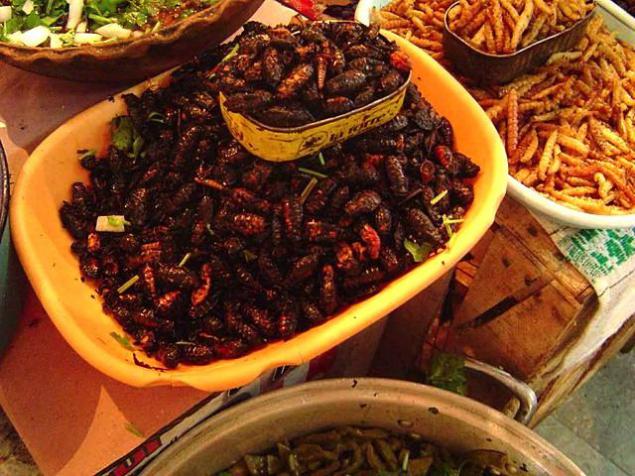
Chahuaz - edible Mexican beetles. There are about 88 species, which are eaten predominantly in the form of larvae in Mexico.
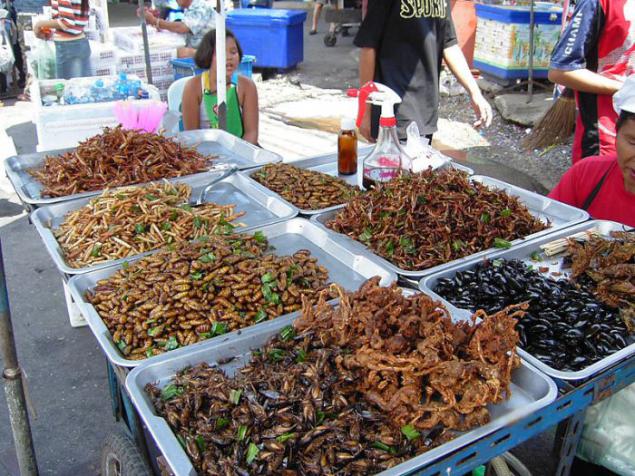
Deep-fried insects to Thai Bangkok. On the far left corner to the front right edge: the locusts, bamboo worms, moth pupae, crickets, scorpions, diving beetles and giant diving beetles.
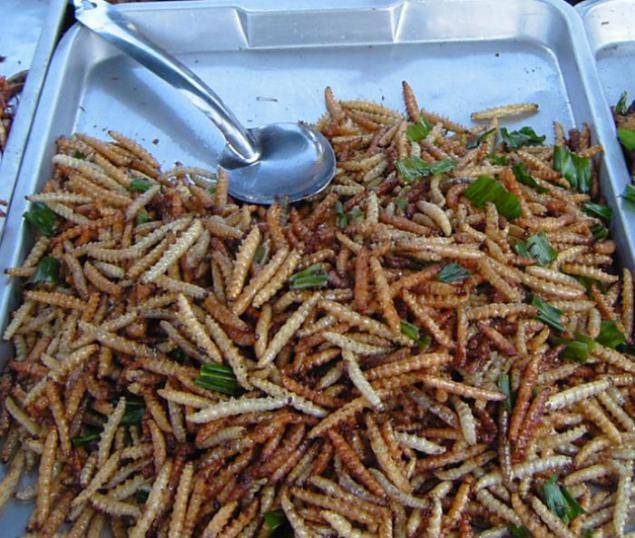
Bamboo worms.
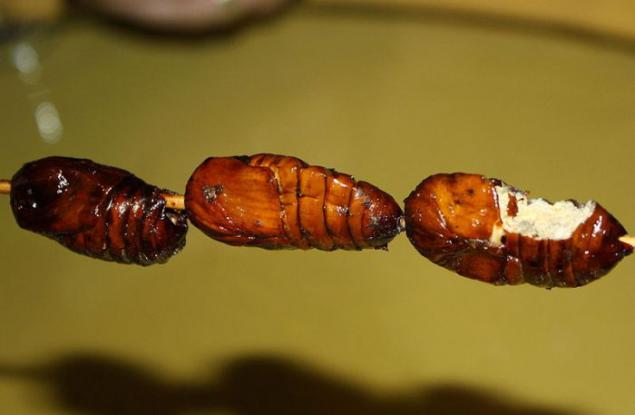
Moth pupae, sold at one of the stalls of the Chinese city of Jinan.
Source
One of the most interesting features of any national culture is food and taste preferences. Cases when the gastronomic delights of one people can cause nausea in others. So, around the world people consume all sorts of living creatures stirring, whether spiders and worms, some animals, such as sheep's head or duck embryos, and still many diverse nicest creations of nature.

Balut - is ripe duck embryo doomed to be boiled alive and eaten in its own shell. Very common delicacy in the South-East Asian regions, preferably applied to beer

According to the Filipinos, the most delicious Balut is obtained from 17-day duck eggs, while the Vietnamese prefer more mature - 19-21 days after birth.

Kazu Marzio (Sardinian. "Rotten cheese") is a traditional Sardinian sheep's milk cheese produced in Italy. The creators of this product, create first a normal pecorino cheese, which left "income" in the open air, allowing flies to postpone the special cheese in it the larva. Hatched maggots digested fats, cheese and fermented them

Usually after such a procedure, "enrichment" cheese product no one takes from the resulting curd thousands of these white worms, though some still try. Kazu Marzio years was banned for manufacture, storage and use, and was available only illegal, but for several years as it proclaimed Sardinian product, so now we can again enjoy this wonderful cheese, unless you are sure that your stomach can easily digest colony of maggots.
Mongolian budog - is roasted in their own skin the carcass of a goat or marmot prepared using embedded in her stomach incandescent stones

Kiviak - Eskimo delicacy delicacy originally from Greenland

The recipe is very simple and requires, in addition to the main ingredients of remarkable patience. We need to find and procure five hundred small birds, guillemots, killing seals, cut off his head and into the hole, without taking rest, shove the birds as much as possible. Also, it is desirable to pre-etch of the carcass as much air, covering all kinds of seal cavity carcass fat and buried under a pile of dainty future stones. Only half a year of waiting and you can extract the finished dish out of the ground, getting pleasure from his inexpressible fragrance and simply relish raw rotting remains of birds.
"Millennial egg" - a national Chinese appetizer created by prolonged storage of conventional bird eggs in a mixture of ash, salt, calcium oxide, rice husks and glue. Depending on the preferences, the product being prepared from a few weeks to a couple of months


A delicacy in Cambodia - fried tarantula the size of the palm of an adult as "a-ping"


Smalahove - National smoked or cured Norwegian dishes, the main ingredient of which is the sheep's head. Typically, the food is cooked poor

Eskamoles - Mexican dish of ant eggs collected from the roots of agave

Pork blood with bread for breakfast

If the Hungarian pig slaughtered early in the morning at dawn, its fresh blood, fried with onions, turns into a decent meal for breakfast.
Sannakji - raw Korean dish consisting of a live octopus, sprinkled with sesame seeds and flavored with sesame oil. In general, it looks pretty innocuous, but frantically contracting slimy octopus tentacles and "revenge" gourmet, blocking access of air through the windpipe

Eye tuna from Japan


Hush - a traditional dish originally from the Caucasus, were prepared from beef feet, heads and stomachs

Durian - the "king of fruit" - is edible, but terribly smelly fruit fruit. Its smell is so volatile that in south-east Asia it is forbidden to eat in some areas, such as hotels or public transport

Ikizukuri is sliced thin pieces of fish, shrimp or octopus, but most often it is the fish

Chef cuts the fish so that by the time serving her heart still flutters, while fillet is completely sliced. Understandably, such a shaped mockery of living beings is forbidden in some countries, such as Germany and Australia.
Blood pancakes - Finnish-Swedish national dish, which include pork blood, milk, rye flour, dark molasses, onion and butter

Rooster combs

Fruit soup bat - common culinary delights on the island of Palau in Micronesia


Hakarl - poluprotuhshee, jerky grenladskoy polar shark on the preparation of which takes more than six months.


Bovine genital organ - typical protein delicacy soups and main ingredient in some Asian regions

Insects and worms

Chahuaz - edible Mexican beetles. There are about 88 species, which are eaten predominantly in the form of larvae in Mexico.

Deep-fried insects to Thai Bangkok. On the far left corner to the front right edge: the locusts, bamboo worms, moth pupae, crickets, scorpions, diving beetles and giant diving beetles.

Bamboo worms.

Moth pupae, sold at one of the stalls of the Chinese city of Jinan.
Source






















